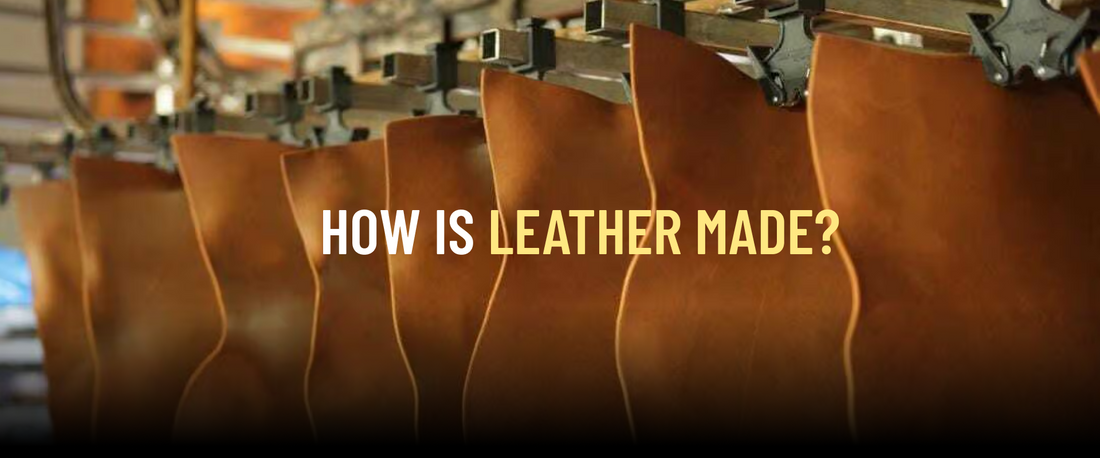Ever wondered how your favorite leather jacket, those durable boots, or that sleek handbag came to life? Leather is a material that stands the test of time, offering durability, luxury, and a rich history of craftsmanship. But the magic of leather doesn’t just happen—it’s the result of a complex, fascinating process that transforms raw animal hides into the versatile, stylish material we all know and love.
In this blog, we’ll take you through the captivating journey of leather-making, uncover different tanning methods, types of leather, and even explore the exciting ways the industry is going green. Ready to dive in? Let’s go!
The Leather-Making Process: A Quick Overview
The process of making leather is nothing short of a blend of art, science, and tradition. It takes several steps to transform rawhide into the high-quality material that’s used in everything from luxury fashion to furniture. Here's how it all unfolds:
1. Sourcing and Preparing the Rawhide
Leather production starts at the very beginning—by sourcing rawhide from animals like cows, goats, or sheep. Here's something interesting: leather is often a byproduct of the meat and dairy industries. That means the hides used for leather aren’t typically harvested just for fashion, so in a way, it's a sustainable practice by repurposing waste!
Once the hide is sourced, it goes through a thorough cleaning process. Picture this: every bit of dirt, blood, and salt is washed away, and the hide is carefully de-haired (yes, that means all those little hairs are removed). What’s left is a clean, collagen-rich hide that forms the base of what will become leather.
2. The Tanning Process: The Transformation Begins
Here’s where the magic really happens—turning that raw hide into leather. Tanning is the key process that preserves the collagen in the hide and turns it into something durable, flexible, and long-lasting. There are two major tanning methods:
- Vegetable Tanning: For the lovers of all things natural, vegetable tanning uses tannins from plant materials like oak bark and chestnut. While this method takes its time (we’re talking weeks or even months), the payoff is worth it. The leather develops a rich, earthy tone and a patina that gets better with age—just like your favorite vintage leather jacket.
- Chrome Tanning: For a faster, more cost-effective process, chrome tanning is the go-to. This process, which uses chromium salts, produces softer, more flexible leather in a matter of days. Most of the leather products you use everyday—shoes, wallets, car seats—are chrome-tanned because of its efficiency and adaptability. Plus, modern methods are getting better at making chrome tanning less harmful to the environment.
3. Finishing Touches: Making Leather Look and Feel Amazing
Once the hide has been tanned, it’s not quite ready to become that fancy handbag or sturdy work boot just yet. The leather still needs to be finished. Think of this step like the final polish—adding color, texture, and softness to the material. Here’s what happens:
- Dyeing: Want that sleek black leather or bold red boots? The leather is dyed during this stage to achieve almost any color under the sun, catering to fashion trends and personal preferences.
- Softening: Leather is softened using oils, waxes, or natural fats, giving it the supple, flexible feel we all love. If you’ve ever noticed how buttery soft leather can be, thank the leather softening process for that.
- Finishing Coats: After dyeing and softening, the leather may go through a series of coatings to protect it from water, scratches, and wear. These final touches ensure that your leather goods stand up to daily use while maintaining their luxurious look.
You can get acquainted with different types of leather here .
Sustainability in Leather Making: The Industry is Going Green
Leather production has had a not-so-great reputation for being tough on the environment, but times are changing. More and more tanneries are adopting eco-friendly practices to reduce their environmental footprint. Here’s how:
- Vegetable Tanning: Vegetable tanning is the more sustainable and natural choice, as was previously mentioned. By using plant-based tannins, it skips the harsh chemicals, making it a greener choice.
- Water Recycling: Some forward-thinking tanneries have developed systems to recycle water used in the tanning process, significantly cutting down on waste.
- Zero-Waste Approaches: In some cases, every part of the hide is utilized to make leather products, minimizing waste. Plus, more leather producers are focusing on ethical sourcing practices, ensuring humane treatment of animals and fair labor practices.
As sustainability becomes a priority, leather production is evolving, with innovative technologies aimed at making the process more environmentally responsible.
Conclusion: Leather - A Perfect Blend of Craftsmanship and Durability
From sourcing raw hides to the intricate tanning and finishing processes, leather-making is an art that’s been perfected over centuries. Whether you’re a fan of full-grain leather’s rich, natural feel or prefer the soft versatility of chrome-tanned leather, the craftsmanship behind each leather item speaks volumes about its quality and value.
It is encouraging to see more environmentally friendly techniques for producing leather becoming more popular in the future. While the industry is still evolving, the move toward eco-conscious practices ensures that leather remains a timeless and ethical material choice.
So, the next time you slip on your favorite leather shoes or pick up that trusty leather bag, you’ll know the fascinating process behind its creation—a perfect blend of tradition, innovation, and artistry.


